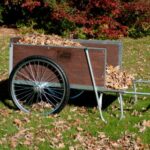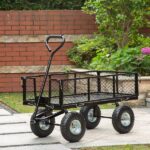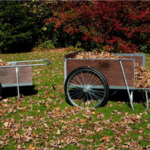Garden carts are essential tools for any avid gardener or landscaper. They make it easy to transport tools, plants, soil, and other supplies around your garden or yard. However, with so many options available on the market, it can be overwhelming to choose the right one for your needs. Here are some essential features to consider when selecting a garden cart:
1. Size and Capacity: One of the first things to consider when choosing a garden cart is its size and capacity. Think about how much weight and volume you will need to transport regularly in your cart. If you have a larger garden or regularly work with heavy materials, opt for a cart with a larger capacity. On the other hand, if you have a smaller garden or only need to transport light loads, a smaller cart may be sufficient.
2. Material: Garden carts are typically made from either plastic, steel, or wood. Each material has its own set of advantages and disadvantages. Plastic carts are lightweight and resistant to rust and corrosion, making them a good choice for those in wet climates. Steel carts are durable and can handle heavy loads, but they are susceptible to rust if not properly cared for. Wood carts have a classic look and are environmentally friendly, but they may require more maintenance to keep them in good condition.
3. Wheels: The wheels on your garden cart are another important consideration. Larger wheels are better for navigating rough terrain, such as gravel or grass, while smaller wheels are fine for smooth surfaces like pavement or concrete. Choose pneumatic (air-filled) tires for a smoother ride and better shock absorption, especially if you will be transporting heavy loads.
4. Handle: The handle on your garden cart should be comfortable to grip and easy to maneuver. Look for a cart with a padded handle to reduce hand fatigue during use. Some carts also have ergonomic handles that are adjustable to suit your height and comfort level.
5. Dumping Mechanism: If you will be using your garden cart to transport soil or other loose materials, consider a cart with a dumping mechanism. This feature allows you to easily tilt the cart and unload its contents without having to lift heavy loads. Some carts have a lever or pedal that activates the dumping mechanism, making it even easier to use.
6. Storage: Some garden carts come with additional storage options, such as racks or compartments for holding tools, gloves, or other small items. If you need to transport tools or supplies along with your materials, consider a cart with built-in storage to keep everything organized and easily accessible.
In conclusion, selecting the right garden cart for your needs requires careful consideration of these essential features. By choosing a cart with the right size, material, wheels, handle, dumping mechanism, and storage options, you can make your gardening tasks much easier and more enjoyable. Take your time to research and compare different models before making a decision, and you’ll be sure to find the perfect garden cart for your needs.













